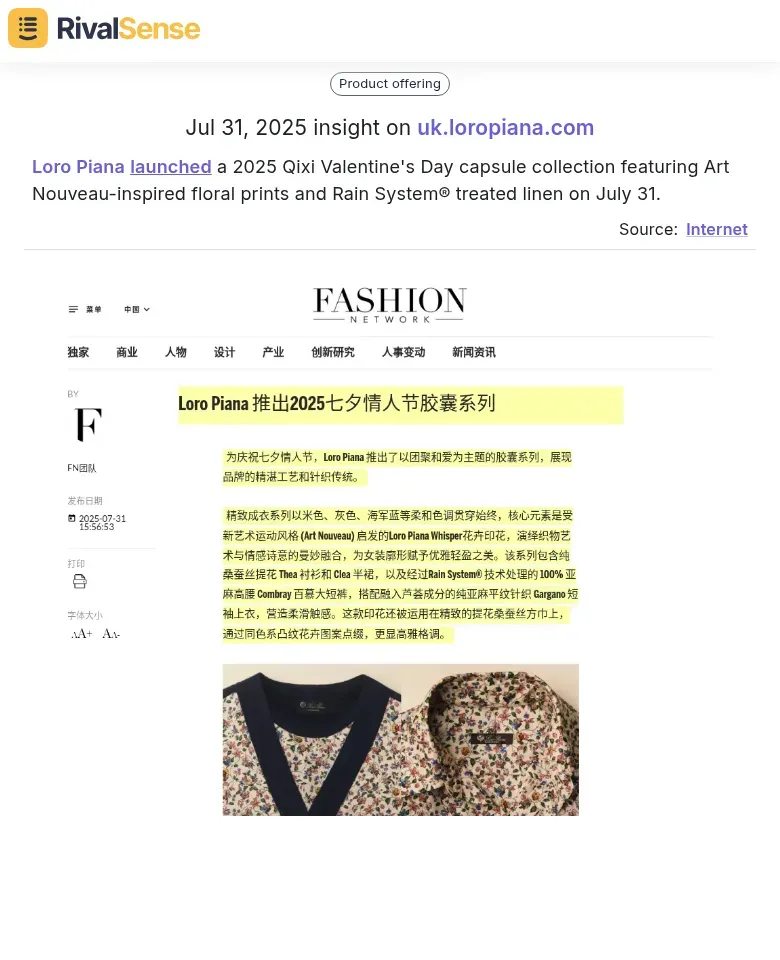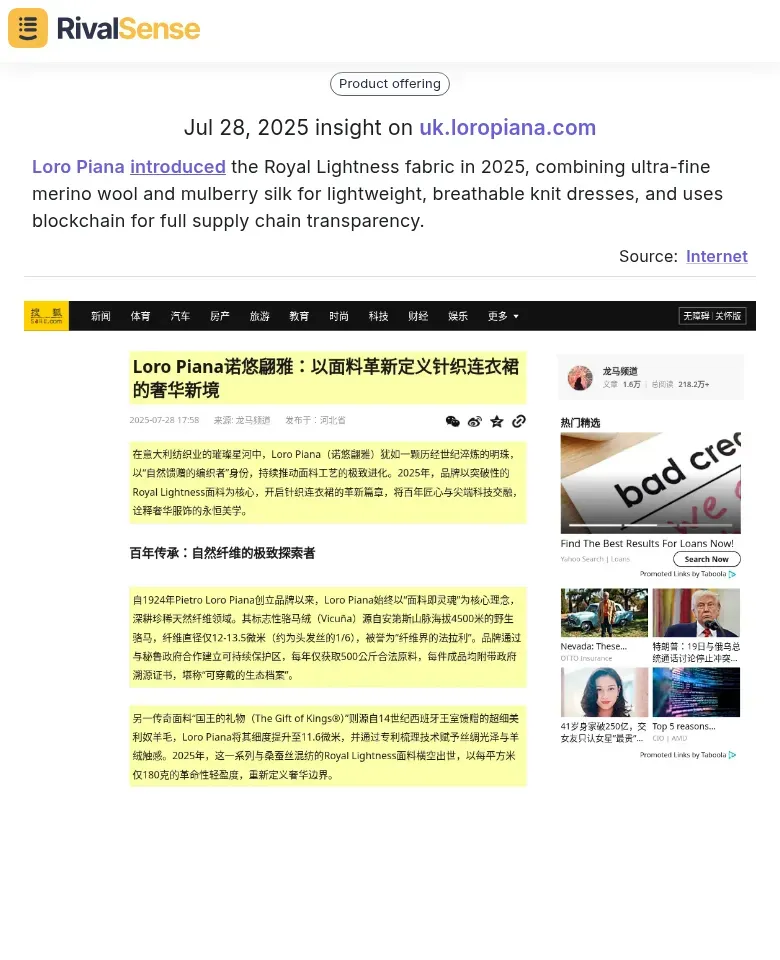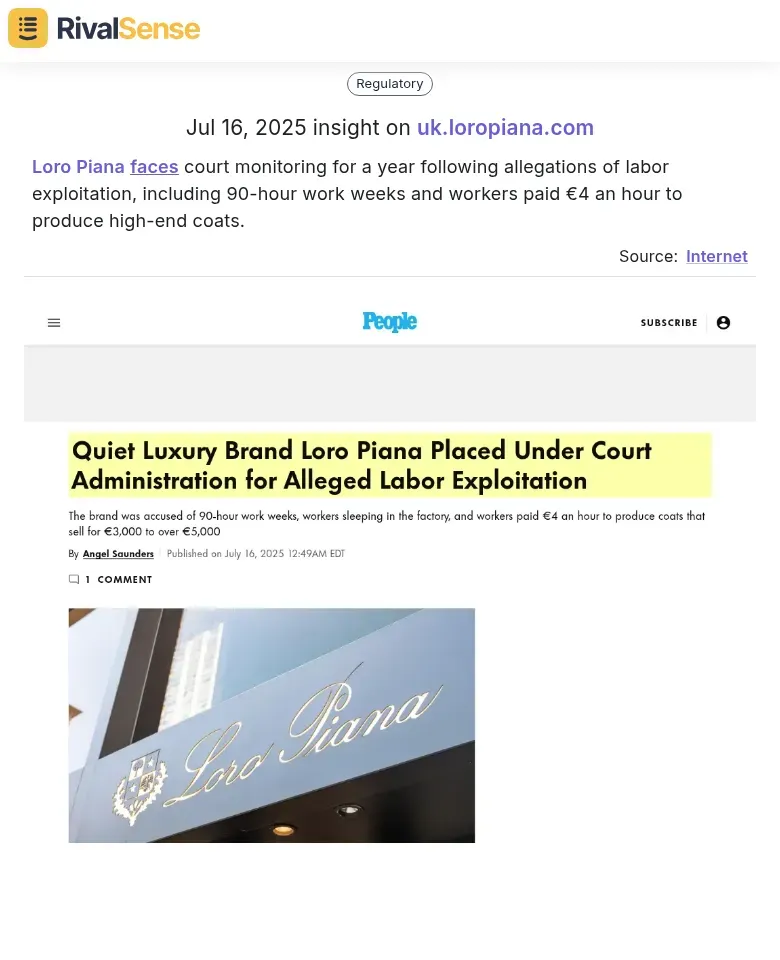The Ultimate Luxury Fashion Partnership Compliance Checklist
Navigating luxury fashion partnership compliance is critical in today's regulatory landscape, where brands face stringent EU directives like the Corporate Sustainability Reporting Directive (CSRD) and Supply Chain Due Diligence Directive (CSDDD). Key compliance areas include environmental claims (avoiding greenwashing), ethical sourcing, and transparent supply chains spanning multiple jurisdictions. Regulatory adherence is non-negotiable—non-compliance risks fines up to 4% of EU turnover and severe reputational damage that can erode consumer trust built over decades.
🛠️ Practical steps: Implement blockchain for traceability (e.g., LVMH's Aura Consortium), conduct regular audits of suppliers for forced labor risks under EU Forced Labour Regulation, and use Digital Product Passports to disclose material origins. Challenges include managing complex global supply chains while protecting artisanal trade secrets. 💡 Tip: Start with high-risk materials like leather or cotton, and leverage ESG reporting to attract green finance—investors increasingly prioritize transparent, ethical brands.
Why Competitor Insights Matter in Compliance Strategy
Staying informed about competitor activities isn't just about market positioning—it's crucial for risk management and compliance benchmarking. For example, consider this recent insight:

Loro Piana launched a 2025 Qixi Valentine's Day capsule collection featuring Art Nouveau-inspired floral prints and Rain System® treated linen on July 31.
Tracking product launches helps identify emerging compliance trends, such as new material treatments or sustainability claims that require verification. This type of insight allows you to benchmark your own compliance measures against industry leaders and anticipate regulatory scrutiny areas.
Legal and Regulatory Frameworks
Navigating legal and regulatory frameworks is critical for luxury fashion partnerships. Essential requirements include comprehensive partnership agreements that clearly define IP ownership, profit sharing, and termination clauses. Compliance with international labor standards (like ILO conventions) and environmental regulations (such as EU's CSDDD and Green Claims Directive) is mandatory—conduct third-party audits and obtain certifications like GOTS or bluesign®.
📋 Practical checklist:
- ✅ Draft detailed collaboration contracts with IP clauses
- ✅ Verify supply chain compliance with labor and environmental laws
- ✅ Secure necessary import/export licenses
- ✅ Implement anti-counterfeiting measures
- ✅ Regularly update compliance protocols to align with evolving regulations
Supply Chain Transparency and Ethical Sourcing
Implement blockchain and traceability technologies for full visibility by adopting digital passports with QR codes or NFC chips that track materials from origin to final product. Partner with platforms like LVMH's Aura Blockchain Consortium to create immutable records. 🛠️ Practical step: Start with pilot programs for high-value items before scaling.

Loro Piana introduced the Royal Lightness fabric in 2025, combining ultra-fine merino wool and mulberry silk for lightweight, breathable knit dresses, and uses blockchain for full supply chain transparency.
This insight demonstrates how leading brands are leveraging technology for transparency. Monitoring such innovations helps you stay ahead of compliance requirements and consumer expectations for verifiable sustainability claims.
Ensure fair labor practices by conducting regular supplier audits using third-party verification services. Implement living wage policies and transparent worker contracts. 💡 Tip: Use unannounced audits to get genuine insights into working conditions.
Risk Management and Mitigation Strategies
Proactively identify compliance breaches through quarterly supply chain audits and real-time monitoring tools. Implement a 5-step crisis protocol: 1) Immediate investigation team deployment, 2) Transparent stakeholder communication within 24 hours, 3) Worker protection measures, 4) Legal compliance review, 5) Remediation plan execution.

Loro Piana faces court monitoring for a year following allegations of labor exploitation, including 90-hour work weeks and workers paid €4 an hour to produce high-end coats.
This type of regulatory insight is invaluable for risk assessment. Monitoring competitor compliance issues helps you identify potential vulnerabilities in your own operations and implement preventive measures before similar problems arise.
📊 Financial safeguards include escrow accounts for potential fines (2% of revenue under NY Fashion Act) and reputational insurance covering supply chain disruptions. 🔍 Key checklist: Map all suppliers beyond tier 1, conduct forced labor risk assessments in high-risk regions, establish whistleblower channels, and maintain crisis simulation drills quarterly.
Best Practices for Sustainable and Compliant Partnerships
Building sustainable and compliant partnerships requires a strategic approach that integrates transparency, technology, and long-term relationship building. Start by establishing clear supplier codes of conduct that outline environmental and social standards, and conduct regular audits using digital platforms for real-time compliance monitoring.
🛠️ Practical steps:
- ✅ Implement blockchain or digital product passports for end-to-end traceability
- ✅ Use AI-powered tools to monitor supplier ESG metrics continuously
- ✅ Develop joint sustainability KPIs with partners and share progress publicly
- ✅ Create transparent communication channels for reporting issues
- ✅ Invest in supplier training programs to build capacity
Integrate compliance into your brand storytelling by showcasing verified sustainability achievements through QR codes on products that link to supply chain data. This builds consumer trust while demonstrating authentic commitment.
Conclusion and Actionable Steps
In summary, luxury fashion leaders must prioritize compliance as a strategic advantage, not just a regulatory burden. Key takeaways include implementing robust due diligence processes for all partners, establishing clear codes of conduct, and maintaining transparent supply chain documentation.
🚀 Next steps:
- Conduct a compliance gap analysis
- Develop partner risk assessment criteria
- Implement digital monitoring tools
- Schedule quarterly compliance reviews
- Establish cross-functional compliance committees
Remember, in luxury fashion, ethical partnerships protect brand integrity and drive long-term value. Staying informed about competitor activities and regulatory developments is crucial for maintaining compliance leadership.
💡 Ready to enhance your compliance strategy? Try RivalSense for free to track competitor product launches, regulatory developments, and supply chain innovations. Get your first competitor report today and stay ahead of compliance requirements in the luxury fashion landscape.
📚 Read more
👉 Leverage Competitor Pricing Insights for Strategic Partnership Termination
👉 OpenAI's New Developer Portal: What It Means for Your Competitive Strategy
👉 Business Partnership Value Creation: A Practical Guide with Actionable Steps
👉 Water Treatment Partnership ROI: Financial Analysis Case Study for Strategic Decision-Making
